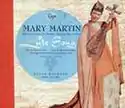| Lute Song | |
|---|---|
 Decca Records release | |
| Music | Raymond Scott |
| Lyrics | Bernard Hanighen |
| Book | Sidney Howard Will Irwin |
| Basis | Pi-Pa-Ji by Gao Ming |
| Productions | 1946 Broadway |
Lute Song is a 1946 American musical with a book by Sidney Howard and Will Irwin, music by Raymond Scott, and lyrics by Bernard Hanighen. It is based on the 14th-century Chinese play Tale of the Pipa (Pi-Pa-Ji) by Gao Ming.[1] Though not a great success, the show is significant for Mary Martin's meeting of then-unknown cast member Yul Brynner, whom she later recommended to her friends Rodgers and Hammerstein for the role of the Siamese monarch in the classic The King and I, which premiered on Broadway in 1951.[2] It was also the only Broadway appearance of Nancy Davis, future U.S. First Lady Nancy Reagan.
Development
Cyril Birch, collaborator in a translation of The Peach Blossom Fan, wrote that presumably the basis of the American play was the 1846 Antoine (A. P. L.) Bazin French translation of the Chinese play Tale of the Pipa.[3]
Plot
The plot focuses on Tsai-Yong (Cai Yong), a young student who leaves his wife Tchao-Ou-Niang and parents to make a name for himself. He becomes a notable magistrate, but when he marries Princess Nieou-Chi, he is forbidden by her father to contact his family. His impoverished parents die of starvation during a famine, and Tchao-Ou-Niang is forced to sell her hair to pay for their funeral. She ultimately is reunited with her husband by Nieou-Chi, and is welcomed to the palace as his #1 wife.
Unlike the original work, Tsai-Yong has to decide between love and filial piety. Ultimately Tsai-Yong and Tchao-Ou-Niang are united.[4]
Production
The Broadway production was directed by John Houseman and was produced by Michael Meyerberg. It opened at the Plymouth Theatre on February 6, 1946 and closed on June 8 of the same year after running for 142 performances. Scenic, costume, and lighting design were by Robert Edmond Jones.
The cast included Yul Brynner as Tsai-Yong, Mary Martin as Tchao-Ou-Niang, Mildred Dunnock and Augustin Duncan as the parents, and Helen Craig as Nieou-Chi. Appearing as Si-Tchun, a Lady-in-Waiting, was Nancy Davis, making her first and only Broadway appearance.
A London production opened at the Winter Garden on October 11, 1948, produced by Albert de Courville and starring Brynner and Dolly Haas.
One factor in the change to the ending was the efforts of Mary Martin and her husband Richard Halliday, who acted as her manager, because of the belief that "'sharing a man was unworthy of a star of Mary's magnitude'".[4]
Song list
- Act 1
- Mountain High, Valley Low ..... Tchao-Ou-Niang and Tsai-Yong
- Monkey See, Monkey Do ..... Tchao-Ou-Niang
- Where You Are ..... Tchao-Ou-Niang
- Act 2
- Willow Tree ..... Tsai-Yong
- Vision Song ..... Tchao-Ou-Niang and Tsai-Yong
- Bitter Harvest ..... Tchao-Ou-Niang
- Act 3
- Mountain High, Valley Low (Reprise) ..... Tchao-Ou-Niang
- Lute Song ..... Tchao-Ou-Niang
Decca Records released an album containing six tracks – four vocals by Martin and two instrumentals – on three 78 RPM records.[5]
Critical reception
Time called it "the season's loveliest production and most charming failure [that] never quite catches the inner glow of art or the outward stir of theater." It continued, "There should have been either less spectacle or less story. As it is, the old tale is retold at considerable length, but loses much of its flow and human feeling through gorgeous interruptions and sumptuous distractions. What's more, neither the writing nor the acting has quite the stylized quality it reaches after."[6]
References
- Birch, Cyril. "Introduction: The Peach Blossom Fan as Southern Drama." In: K'ung, Shang-jen. Translators: Chen, Shih-hsiang and Harold Acton. Collaborator: Birch, Cyril. The Peach Blossom Fan (T'ao-hua-shan). University of California Press, 1976. ISBN 0-520-02928-3.
- Clausen, Søren, Roy Starrs, and Anne Wedell-Wedellsborg. Cultural encounters: China, Japan, and the West : essays commemorating 25 years of East Asian studies at the University of Aarhus. Aarhus University Press, 1995. ISBN 8772884975, 9788772884974.
Notes
- ↑ Stanley Hochman (1984). McGraw-Hill encyclopedia of world drama: an international reference work in 5 volumes. VNR AG. p. 235. ISBN 978-0-07-079169-5. Retrieved 30 May 2013.
- ↑ Davis, Ronald L. (2008). Mary Martin, Broadway Legend. University of Oklahoma Press. p. 172. ISBN 978-0-8061-3905-0. Free preview at amazon.com
- ↑ Birch, p. xvii.
- 1 2 Clausen, Starrs, and Wedell-Wedellsborg, p. 202. "The dominant theme of the Chinese Pipa ji is xiao, filial piety. Yet the American Lute Song changes this ending by having Cai Yong choose between the two. As a result, Niu Ji retreats; Cai Yong and Chao Wuniang are absorbed in their mutual love. The return from polygamy to monogamy at the end of Lute Song was partly prompted by the actress Mary Martin and her husband-manager, Richard Halliday. The reason is that 'sharing a man was unworthy of a star of Mary's magnitude'[...]"
- ↑ "Lute Song at Getback.com". Archived from the original on 2011-07-11. Retrieved 2008-11-29.
- ↑ "The Theater: Old Play in Manhattan." Time. Monday February 8, 1946.